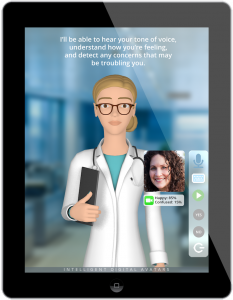 Medical health apps have become an integral part of the American healthcare system. With the proliferation of high-end devices, and the need for remote care presented by the COVID-19 pandemic, mobile virtual assistants are helping increase the ‘care’ side of healthcare.
Medical health apps have become an integral part of the American healthcare system. With the proliferation of high-end devices, and the need for remote care presented by the COVID-19 pandemic, mobile virtual assistants are helping increase the ‘care’ side of healthcare.
A key goal for intelligent virtual assistants is to reduce the amount of time that clinicians spend on administrative work. By taking over roles like EHR data-entry, retrieving needed information from patients, and tracking real-time patient insight, mobile virtual assistants improve the care providers are able to deliver patients.
The healthcare community has spoken, and they like what they see
- As of March 2020, 27% of consumers are using some kind of virtual assistant every day, from online assistants to smart-speaker devices from Amazon, Google, and Apple.
- 74.5% of patients look online to find out about doctors, dentists, or medical care.
- Virtual assistants can both decrease patient frustration and increase provider cost savings. A Deloitte report found “the health care system is so complex that more than half (52%) of consumers are unable to navigate it on their own, triggering avoidable customer service calls and more costly care.”
- Patients are more and more comfortable sharing their health data online. That data is coming from health apps, showing an increasing comfort level with using technology to help manage health. “42% of US consumers said they used tools to measure fitness and track health-improvement goals. Though this has stayed the same since 2018, it’s a significant jump from just 17% in 2013.”
- Voice interactions with Virtual Assistants are especially useful for patients with visual impairments.
- The COVID-19 pandemic has driven health systems to look more toward AI for solutions. “Systems are looking into algorithm-driven tools, such as bots, business intelligence, and AI to drive efficiencies in operations, clinical decision-making, and visibility as the need for virtual care has increased dramatically.”
These virtual assistants can also ease the doctor shortages and allow wary patients to avoid in-person visits. By performing patient follow-ups, sending prescribed treatment reminders, or living inside a 24-hour access patient portal, they can provide patients with needed medical information or answers to health-related questions without requiring them to speak directly to their doctor.
Empower the Patient
According to the CDC, 6 in 10 Americans live with at least one chronic disease, accounting for 90% of the nation’s $3.5 trillion in annual health care expenses.
With mobile health apps and mobile virtual assistants on the rise, cost-reducing solutions can provide better outcomes and more satisfied patients. Placing these tools in the hands of healthcare consumers empowers them to have regular, consistent help to combat their conditions, where there was none before.
Manage your health from the convenience of wherever you happen to be.
It’s no longer a matter of ‘if’ virtual assistants will help drive down costs while improving patient education and experience; rather it’s a matter of a having them up and running as quickly as possible in this rapidly changing technological and legislative environment. Gartner predicts at least 50% of online customer self-service search activities will be conducted by a virtual assistant in many large-scale enterprises.
See our avatars in action
We’ve developed a demo site to introduce you to Holly, our intelligent avatar who will walk you through a health check-in. During the experience, ask her questions at any time – about COPD or about herself – and she’ll answer you and then get back to the task at hand. Check it out here.
